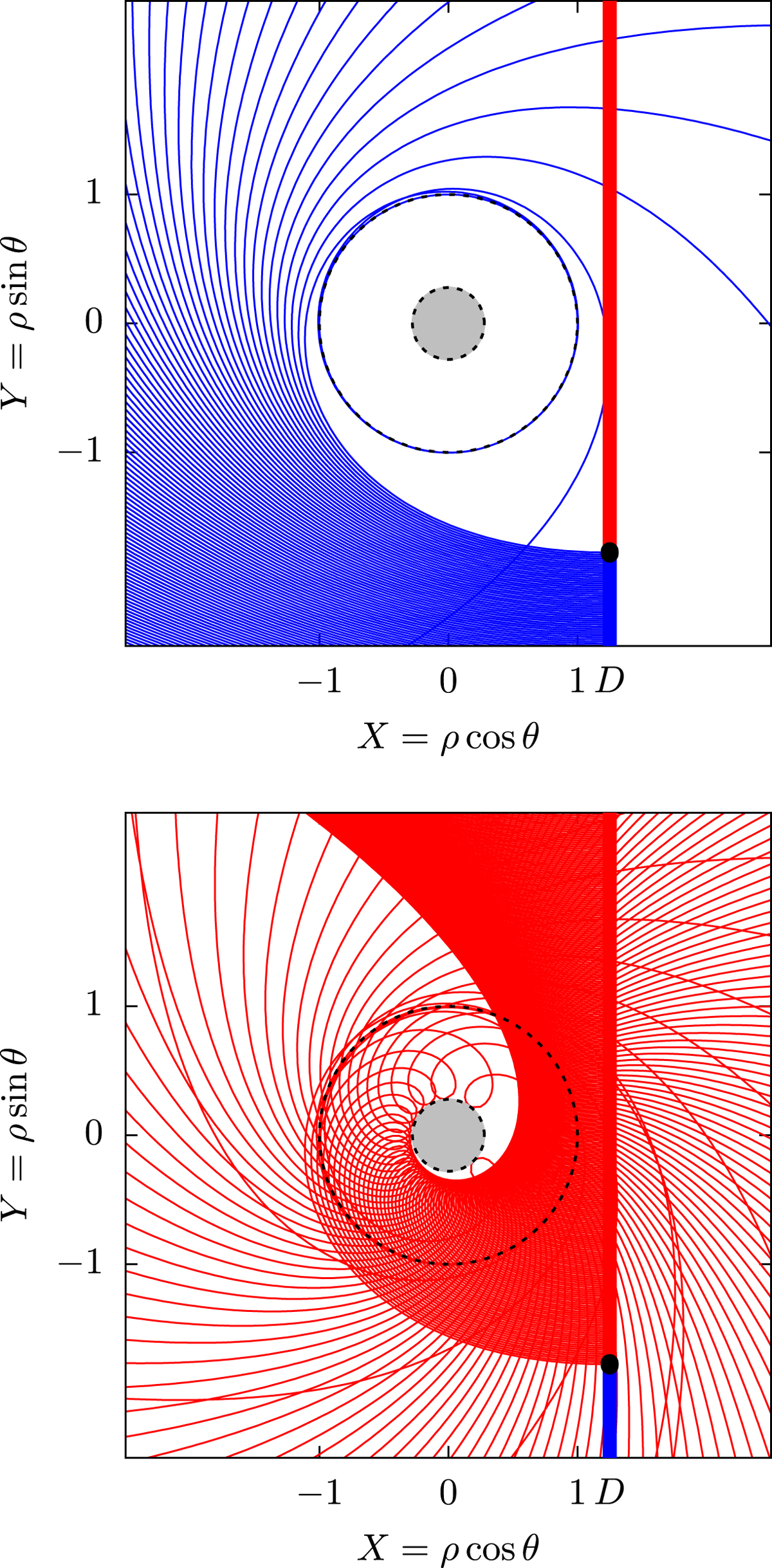Fig. A.2

Flux of particles coming from the line X = D, with D = 1.25 > Dcrit. The two types of possible orbits are represented separately, with the same colour code as in Fig. 3. Top: unbounded trajectories of type T3 are represented in blue. They approach a minimum distance equal to 1 but never reach it exactly (outer dashed circle, around which they can perform an arbitrary number of turns before going back). In the limiting case where ρC = 1 (black initial condition), the particle makes a infinite number of turns as ρ → 1. Bottom: unbounded trajectories of type T1 are represented in red. They cross the characteristic radius ρ0, at which their angular velocity is inverted (see the small loops). For initial positions Yi tending to the black point, the minimal distance reached by the particle tends to ρcav = W0(exp[−1]) (inner dashed circle, see (Eq. 37)). If we consider an infinite number of particles, this forms a cavity with radius W0(exp[−1]) (grey disc).
Current usage metrics show cumulative count of Article Views (full-text article views including HTML views, PDF and ePub downloads, according to the available data) and Abstracts Views on Vision4Press platform.
Data correspond to usage on the plateform after 2015. The current usage metrics is available 48-96 hours after online publication and is updated daily on week days.
Initial download of the metrics may take a while.


